- When to Harvest Gooseberries: A Complete Guide
- Understanding Gooseberries
- The Ripening Process
- Signs of Ripeness
- Harvesting Techniques
- Storing and Using Harvested Gooseberries
- Choosing the Right Time to Harvest
- Preparing Gooseberries for Harvest
- 1. Pruning
- 2. Watering
- 3. Fertilizing
- 4. Mulching
- 5. Pest and Disease Control
- 6. Netting
- 7. Harvesting
- Signs of Ripe Gooseberries
- Harvesting Techniques
- 1. Timing
- 2. Inspect the Fruits
- 3. Use Garden Shears
- 4. Harvest in Dry Weather
- 5. Store Properly
- 6. Wear Protective Gear
- 7. Prune After Harvest
- Storing Freshly Harvested Gooseberries
- 1. Sorting and Cleaning
- 2. Drying
- 3. Choosing the Right Container
- 4. Avoiding Crowding
- 5. Refrigeration
- 6. Freezing
- 7. Check Regularly
- Sorting and Cleaning Gooseberries
- 1. Sort the Gooseberries
- 2. Rinse the Gooseberries
- 3. Remove Stems and Calyx
- 4. Pat Dry the Gooseberries
- 5. Inspect for any Remaining Debris
- 6. Store or Use the Gooseberries
- Freezing Gooseberries for Long-Term Storage
- Canning Gooseberries for Homemade Preserves
- 1. Gather the necessary supplies:
- 2. Prepare the gooseberries:
- 3. Prepare the canning jars:
- 4. Make the syrup:
- 5. Fill the jars:
- 6. Seal the jars:
- 7. Process the jars:
- 8. Check the seals:
- 9. Store and enjoy:
- Question-answer:
- How should I care for gooseberries after harvesting?
- When is the best time to prune gooseberry bushes?
- How often should I water gooseberries after harvesting?
- Should I fertilize gooseberries after harvesting?
- How can I protect gooseberries from pests and diseases after harvesting?
- Can I transplant gooseberry bushes after harvesting?
- What should I do with gooseberry plants in the winter?
- Video: How To Grow Gooseberries – A Complete Introduction To Growing A Delicious And Underrated Fruit
Harvesting gooseberries can be a rewarding experience, but the work doesn’t end there. After the berries have been picked, it’s important to give your plants the care they need to thrive and produce bountiful harvests in the future. Taking the time to properly care for your gooseberries after harvesting will ensure their longevity and health.
Pruning is a crucial step in caring for gooseberries after harvest. Removing any dead or diseased branches will help prevent the spread of pests and diseases, and will also promote healthy growth. Additionally, pruning can help shape the plants and improve airflow, reducing the risk of fungal infections.
Fertilizing is another important aspect of caring for gooseberries. After harvesting, it’s a good idea to give your plants a boost of nutrients to promote healthy growth. Applying a balanced fertilizer, such as 10-10-10, in early spring and again in late summer can provide the necessary nutrients for strong, vigorous plants.
Mulching is also essential for caring for gooseberries after harvesting. Applying a layer of organic mulch, such as straw or wood chips, around the base of the plants can help retain moisture, suppress weeds, and regulate soil temperature. This will create a more favorable environment for the plants and help them recover from the stress of harvesting.
Lastly, don’t forget to water your gooseberries regularly. Proper watering is key to ensuring the health and productivity of your plants. Aim to keep the soil consistently moist, but not waterlogged. Water deeply, allowing the water to penetrate the root zone, and avoid watering the foliage to reduce the risk of fungal diseases.
When to Harvest Gooseberries: A Complete Guide
Gooseberries are delicious fruits that are easy to grow and harvest. However, knowing the right time to harvest them is crucial to ensure they are at their peak flavor and texture. Here is a complete guide to help you determine the best time to harvest gooseberries.
Understanding Gooseberries
Gooseberries are small, round berries that come in different colors such as green, yellow, and red. They have a slightly tart flavor and can be eaten fresh or used in a variety of culinary dishes, including jams, jellies, pies, and sauces. Gooseberries are ready to harvest when they are fully ripe but still firm.
The Ripening Process
- Green gooseberries: These are unripe and tart. They are not suitable for harvesting and should be left on the bush until they turn a different color.
- Yellow gooseberries: These are semi-ripe and have a milder flavor compared to red gooseberries. They can be harvested for immediate consumption or used in cooking.
- Red gooseberries: These are fully ripe and have a sweeter flavor. They are the most ideal for harvesting.
Signs of Ripeness
When gooseberries are ready to be harvested, they will show some specific signs of ripeness:
- The berries will have reached their full size and weight.
- The color of the berries will be vibrant and consistent throughout.
- The berries will have a slight softness when gently squeezed.
- The fruits will be easily detachable from the bush when lightly tugged.
- The berries on the cluster will ripen at different rates, so it’s essential to check each one individually.
Harvesting Techniques
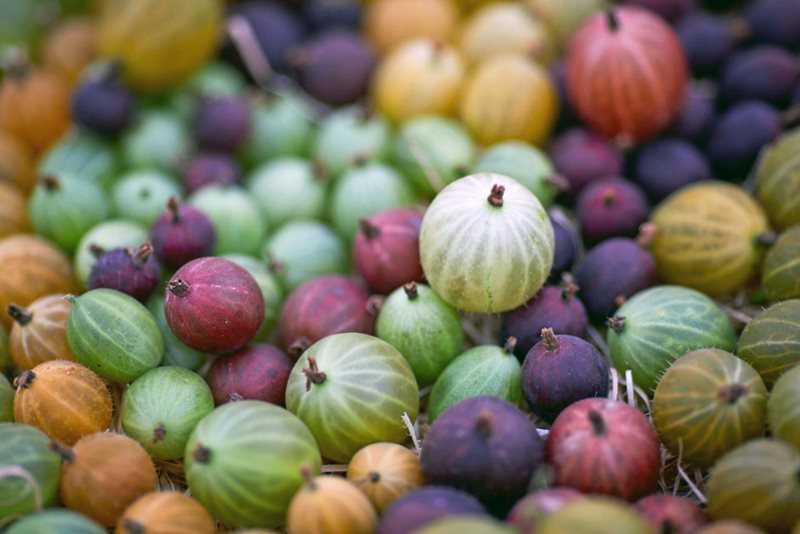
To harvest gooseberries, follow these simple steps:
- Using clean and sharp gardening shears or scissors, carefully cut the individual berries or clusters from the bush.
- Avoid pulling or plucking the berries forcefully, as this can damage the plant and affect future growth.
- Place the harvested berries in a shallow container or basket to avoid bruising or crushing.
Storing and Using Harvested Gooseberries
Once harvested, gooseberries can be stored in the refrigerator for up to a week. It is best to use them as soon as possible to enjoy their full flavor.
Gooseberries can be used in a wide range of recipes, including pies, tarts, jams, jellies, sauces, and even beverages. They can also be frozen for future use if you have an abundance of fruit.
In conclusion, harvesting gooseberries at the right time is crucial to ensure their optimal flavor and texture. By understanding the ripening process and signs of ripeness, you can harvest your gooseberries at the perfect time and enjoy them in various culinary delights.
Choosing the Right Time to Harvest
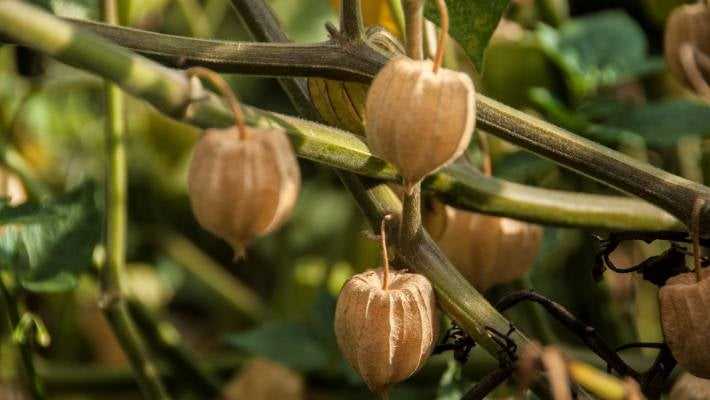
Knowing the right time to harvest your gooseberries is crucial in ensuring that they are at their peak flavor and ripeness. Harvesting at the wrong time can result in underripe or overripe berries, impacting their taste and texture.
Here are a few key factors to consider when determining the optimal time to pick your gooseberries:
- Color: Gooseberries generally change color as they ripen. Green varieties will turn yellow or red when fully ripe, while red varieties may deepen in color.
- Texture: Ripe gooseberries should have a slightly firm texture. Gently squeeze the berries to assess their firmness, avoiding any that feel too soft or mushy.
- Taste: Taste-testing is the most reliable way to determine if gooseberries are ready for harvest. Pick a few berries from different parts of the plant and sample their flavor. Fully ripe berries should be sweet-tart, while underripe ones may be overly tart.
It’s important to note that the exact timing for harvest will vary depending on the variety of gooseberries you are growing. Some varieties may ripen earlier in the season, while others take longer. Consult the specific guidelines for your particular variety to ensure you are picking at the optimal time.
Once you’ve determined that your gooseberries are ready to be harvested, it’s time to get picking! Use clean, sharp scissors or pruners to carefully remove the berries from the plant, taking care not to damage the stems or surrounding branches.
By following these tips and paying close attention to the signs of ripeness, you’ll be able to enjoy a bountiful harvest of delicious and flavorful gooseberries.
Preparing Gooseberries for Harvest
Preparing gooseberries for harvest is an important step in ensuring a successful and bountiful harvest. By taking the time to properly care for your gooseberry plants, you can increase the quality and quantity of your berries. Here are some essential tips for preparing gooseberries for harvest:
1. Pruning
Pruning your gooseberry plants is crucial for ensuring optimal fruit production. Prune any dead, damaged, or diseased branches to encourage healthy growth and prevent the spread of diseases. Thin out the branches to improve air circulation and sunlight penetration, which can help reduce the risk of fungal infections.
2. Watering
Proper watering is essential for the health of gooseberry plants. Keep the soil consistently moist, but not waterlogged. Gooseberries require regular watering, especially during dry periods or when the fruit is forming. Irrigate the plants at the base, rather than overhead, to prevent foliage diseases.
3. Fertilizing
Before the harvest season, it’s essential to apply fertilizer to gooseberry plants to provide them with the necessary nutrients for fruit development. Use a balanced fertilizer with equal parts nitrogen, phosphorus, and potassium. Apply the fertilizer according to the manufacturer’s instructions, making sure to water it in well.
4. Mulching

Mulching around gooseberry plants is beneficial for moisture retention, weed suppression, and temperature regulation. Apply a layer of organic mulch, such as straw or wood chips, around the base of the plants. Make sure not to pile the mulch against the stem to avoid rotting.
5. Pest and Disease Control
Inspect your gooseberry plants regularly for signs of pests or diseases. Common pests that affect gooseberries include aphids, gooseberry sawfly larvae, and powdery mildew. Use appropriate organic pest control methods or insecticides to manage pests, and fungicides for diseases.
6. Netting
If you are growing gooseberries in an area with birds, it’s crucial to protect your harvest from being eaten by netting the plants. Use bird netting to cover the plants once the berries start to ripen. Ensure the netting is securely fastened to prevent birds from accessing the fruit.
7. Harvesting
Finally, it’s essential to know when to harvest your gooseberries. The berries should be firm, but not rock-hard, and have developed their characteristic color. Gently twist the berries to remove them from the plant. Be careful not to damage the branches or surrounding foliage during the harvesting process.
By following these tips for preparing gooseberries for harvest, you can ensure a successful and abundant yield of delicious berries. Enjoy the fruits of your labor!
Signs of Ripe Gooseberries
- Color: Ripe gooseberries come in various colors, including green, yellow, red, and even purple. The color of the gooseberries will become more vibrant and translucent as they ripen.
- Texture: When gently squeezed, ripe gooseberries will feel slightly soft and yield to pressure. Avoid berries that are too firm or too mushy.
- Taste: The flavor of ripe gooseberries will be sweet and slightly tart. Before harvesting, it is recommended to taste a few berries to ensure they have reached the desired level of sweetness.
- Size: Gooseberries grow to different sizes, depending on the variety. Ripe berries are typically plump and have a size that is consistent with their variety.
- Falling off the bush: Gooseberries that are fully ripe may fall off the bush easily when touched or when the bush is lightly shaken.
It is important to note that not all gooseberries ripen at the same time. Harvesting should be done selectively, picking only the ripe berries while leaving the unripe ones on the bush for further ripening.
Harvesting Techniques
Proper harvesting techniques are essential for ensuring the best yield and quality of gooseberries. Here are some tips to help you harvest your gooseberries effectively:
1. Timing
Gooseberries should be harvested when they are fully ripe but still firm. The timing of the harvest will depend on the variety of gooseberries you are growing. Generally, the fruits are ready to harvest in early to mid-summer.
2. Inspect the Fruits
Before harvesting, carefully inspect the fruits for any signs of damage, disease, or pests. Remove any fruits that are damaged or diseased to prevent the spread of infections.
3. Use Garden Shears
To harvest gooseberries, use clean garden shears or pruning scissors. Cut the fruit-bearing stems close to the main branch or trunk, making sure not to damage the rest of the plant. Avoid pulling or twisting the fruits, as this may cause damage.
4. Harvest in Dry Weather
It is best to harvest gooseberries when the weather is dry. Wet fruits can rot quickly, and wet conditions can promote the spread of diseases.
5. Store Properly
After harvesting, store the gooseberries in a cool and dry place. Avoid stacking the fruits on top of each other, as this can lead to bruising. Gooseberries can be kept in the refrigerator for a few days or preserved by freezing or canning.
6. Wear Protective Gear
When harvesting gooseberries, it is a good idea to wear gloves and long sleeves to protect your hands and arms from the thorny branches. This will help prevent any injuries or scratches while picking the fruits.
7. Prune After Harvest
After harvesting the gooseberries, it is a good time to prune the plant. Remove any dead, damaged, or overcrowded branches to improve air circulation and promote new growth.
| Technique | Description |
|---|---|
| Timing | Harvest when fully ripe but firm. |
| Inspection | Remove damaged or diseased fruits. |
| Use Garden Shears | Cut stems close to the main branch or trunk. |
| Harvest in Dry Weather | Avoid wet conditions to prevent rot and disease. |
| Store Properly | Keep in a cool and dry place, avoiding stacking. |
| Wear Protective Gear | Use gloves and long sleeves to protect hands and arms. |
| Prune After Harvest | Remove dead, damaged, or overcrowded branches. |
Storing Freshly Harvested Gooseberries
After you have harvested your gooseberries, it is important to store them properly to ensure they stay fresh and maintain their flavor for as long as possible. Here are some essential tips for storing freshly harvested gooseberries:
1. Sorting and Cleaning

Before storing your gooseberries, make sure to sort through them and remove any damaged or moldy berries. Cleaning them gently with cool water can also help remove any dirt or debris.
2. Drying
After cleaning, it is important to dry your gooseberries thoroughly. Excess moisture can lead to spoilage, so let them air dry or use a towel to gently pat them dry.
3. Choosing the Right Container
When storing gooseberries, it is best to use a container that allows for air circulation. A shallow container or a shallow layer in a breathable bag like a paper bag or a mesh bag works well. Avoid using airtight containers, as it can lead to moisture buildup and spoilage.
4. Avoiding Crowding
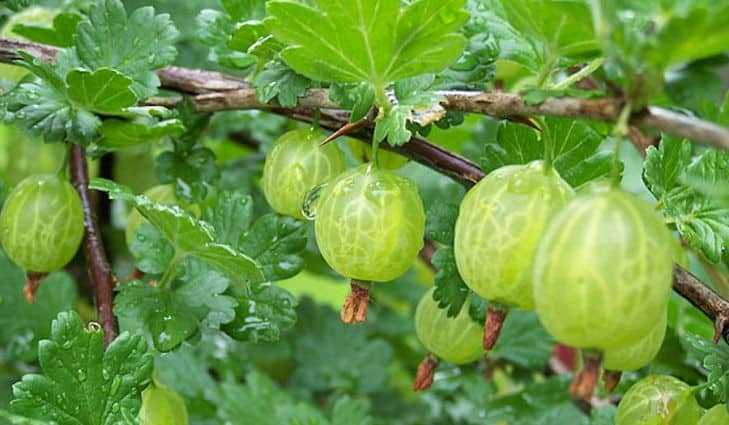
Make sure not to overcrowd your gooseberries when storing them. Overcrowding can cause bruising and sogginess, which can lead to spoilage. Leave some space between the berries to allow for air circulation.
5. Refrigeration
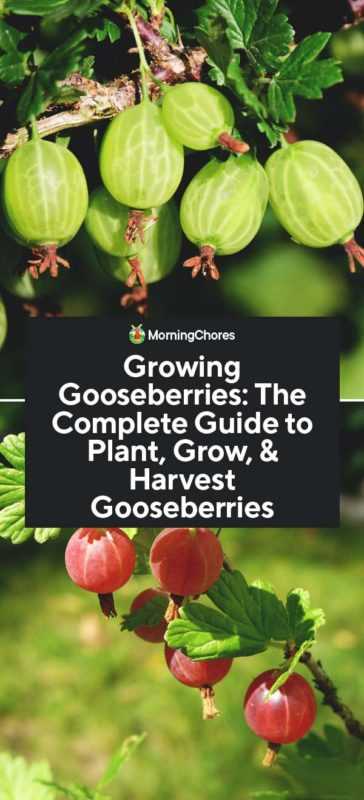
Gooseberries can be stored in the refrigerator to prolong their freshness. Place them in the crisper drawer, which has a higher humidity level, or in a perforated plastic bag to maintain the optimum level of moisture while still allowing for air circulation.
6. Freezing
If you have an abundance of gooseberries, consider freezing them for long-term storage. Wash and thoroughly dry the berries before placing them in airtight containers or freezer bags. They can be stored in the freezer for up to 12 months.
7. Check Regularly
While stored, it is important to check your gooseberries regularly for any signs of spoilage. Remove any berries that have become moldy or soft to prevent them from spoiling the rest.
By following these tips and tricks for storing freshly harvested gooseberries, you can enjoy their delicious taste for an extended period of time.
Sorting and Cleaning Gooseberries
After harvesting the gooseberries, it is important to sort and clean them properly before storing or using them. Follow these essential tips to ensure you have top-quality gooseberries:
1. Sort the Gooseberries
Start by sorting the gooseberries to remove any damaged or spoiled berries. Discard any berries that are overripe, moldy, or have signs of disease or pests. Sorting the berries will help you get rid of any fruit that could affect the quality of the rest of your harvest.
2. Rinse the Gooseberries
Once you have sorted the gooseberries, give them a gentle rinse under cold running water. This will remove any dirt, debris, or residual pesticides present on the berries. Be careful not to wash them too vigorously, as gooseberries can be fragile and easily crushed.
3. Remove Stems and Calyx
After rinsing, remove the stems and calyx from the gooseberries. The stems are the green part that connects the berry to the plant, and the calyx is the green, leafy structure at the base of the berry. Simply pinch or cut them off using a pair of kitchen scissors or your fingers.
4. Pat Dry the Gooseberries
Gently pat dry the gooseberries using a clean kitchen towel or paper towels. This will remove excess moisture and help preserve the quality of the berries. Avoid rubbing or squeezing the berries too hard, as this could cause them to bruise or damage.
5. Inspect for any Remaining Debris
Before storing or using the gooseberries, inspect them for any remaining debris or unwanted materials. Check for any dirt, leaves, twigs, or insects that might have been missed during the sorting and cleaning process. Remove any debris you find.
6. Store or Use the Gooseberries
Once the gooseberries are sorted, cleaned, and inspected, you can choose to store them or use them immediately. If storing, place the gooseberries in a breathable container or bag and store them in the refrigerator. They can stay fresh for up to a week when properly stored. If using them immediately, incorporate them into delicious recipes or enjoy them fresh as a snack.
By following these steps for sorting and cleaning your gooseberries, you will ensure that you have fresh, high-quality berries that can be enjoyed in various ways.
Freezing Gooseberries for Long-Term Storage
If you have a surplus of gooseberries and want to enjoy their fresh flavors throughout the year, freezing is an excellent option. Freezing gooseberries is a simple and effective way to extend their shelf life and preserve their nutritional value. Follow these steps to freeze your gooseberries properly:
- Select ripe, firm gooseberries without any signs of damage or spoilage. Remove any stems or leaves attached to the berries.
- Wash the gooseberries thoroughly under running water to remove any dirt or debris. You can use a colander to make the process easier.
- If desired, you can choose to remove the stems and tails from the gooseberries before freezing. However, this is not necessary and can be done after thawing as well.
- Spread the gooseberries in a single layer on a baking sheet lined with parchment paper or a silicone mat. Make sure the berries are not touching each other.
- Place the baking sheet with the gooseberries in the freezer and let them freeze completely. This usually takes about 2-3 hours.
- Once the gooseberries are frozen, transfer them into freezer-safe containers or resealable plastic bags. Make sure to remove any excess air from the bags to prevent freezer burn.
- Label the containers or bags with the date of freezing to keep track of their freshness.
- Return the gooseberries to the freezer and store them at a temperature of 0°F (-18°C) or below.
When properly frozen, gooseberries can be stored for up to 12 months without significant loss of quality. To use the frozen gooseberries, simply take out the desired amount and thaw them in the refrigerator overnight or use them directly in recipes without thawing.
Keep in mind that freezing may slightly change the texture of the gooseberries, making them softer after thawing. However, this will not affect their taste or nutritional value.
By freezing your gooseberries, you can enjoy their vibrant flavors and numerous health benefits all year round. Whether you want to make delicious pies, jams, or enjoy them on their own, freezing will ensure that you always have a supply of fresh gooseberries at hand.
Canning Gooseberries for Homemade Preserves
Preserving gooseberries by canning is a great way to enjoy their fresh taste all year round. Canning them in homemade preserves allows you to control the ingredients and ensure the quality of the final product. Here are some essential tips and steps to follow when canning gooseberries:
1. Gather the necessary supplies:
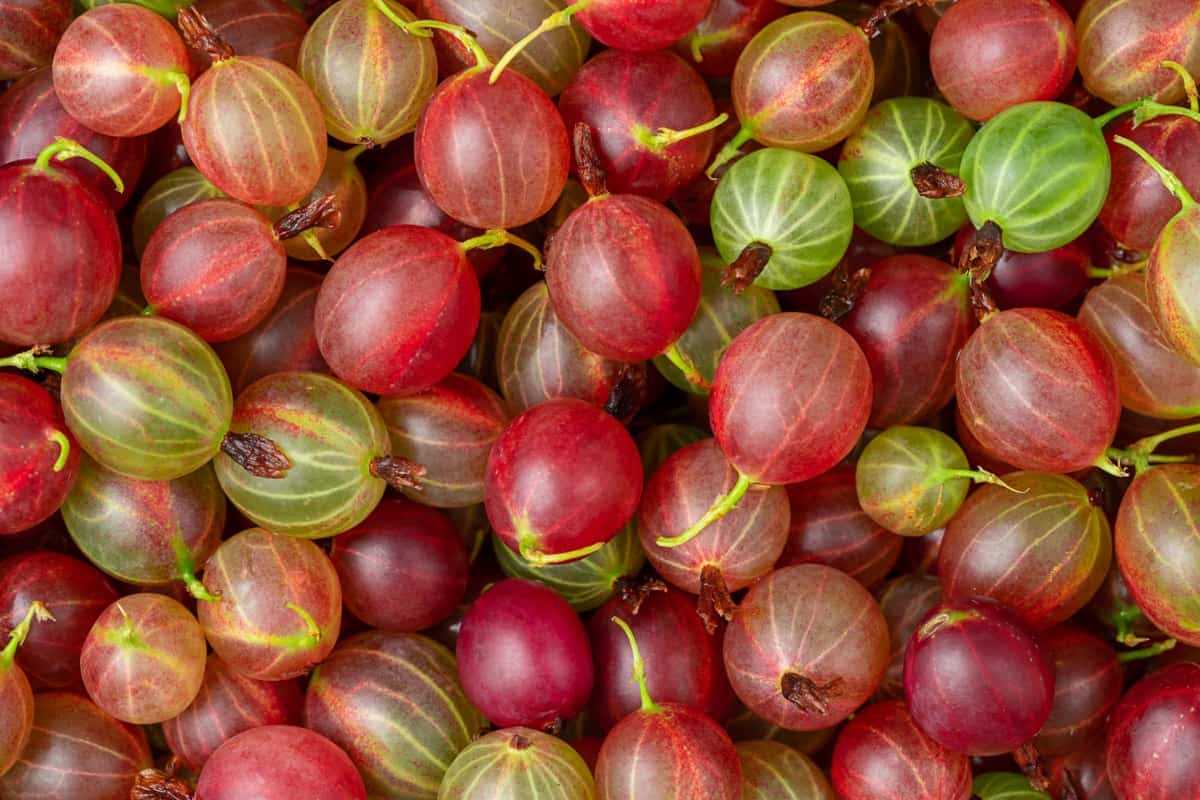
- Canning jars with lids
- A water bath canner or large pot
- Canning funnel
- Ladle
- Clean kitchen towels
2. Prepare the gooseberries:
Wash the gooseberries thoroughly and remove any stems or leaves. You can choose to leave them whole or remove the tops and tails, depending on your preference.
3. Prepare the canning jars:
- Wash the jars and lids with hot soapy water and rinse well.
- Sterilize the jars by placing them in a water bath canner or large pot filled with boiling water. Let them boil for 10 minutes. Remove them from the water and let them air dry on a clean kitchen towel.
4. Make the syrup:
You can choose the sweetness level of your syrup based on your preference. Combine water and sugar in a saucepan and heat until the sugar is dissolved. You can also add spices or flavors like cinnamon or vanilla if desired.
5. Fill the jars:
- Place a canning funnel on top of a jar.
- Add the prepared gooseberries into the jar, leaving about ½ inch of headspace.
- Pour the hot syrup over the gooseberries, ensuring that they are completely covered.
- Remove any air bubbles by gently running a clean knife or spatula along the sides of the jar.
6. Seal the jars:
- Wipe the rims of the jars with a clean, damp cloth to remove any residue.
- Place a lid on each jar and screw on the bands until they are fingertip tight.
7. Process the jars:
- Place the filled jars into a water bath canner or large pot filled with boiling water.
- Make sure the water covers the jars by at least 1 inch.
- Process the jars in boiling water for the recommended time based on your altitude and the size of the jars (usually 10-15 minutes).
- After processing, carefully remove the jars from the water and let them cool on a clean kitchen towel.
8. Check the seals:
After the jars have cooled for 24 hours, check the seals. Press down on the center of the lids; if they do not flex up and down, the jars have sealed properly. Any unsealed jars should be refrigerated and consumed within a few weeks.
9. Store and enjoy:
Store the properly sealed jars in a cool, dark place. The canned gooseberries can be enjoyed for up to a year. Use them in pies, cakes, jams, or as a topping for yogurt or ice cream.
By following these steps, you can savor the delicious taste of gooseberries long after their harvest season ends. Happy canning!
Question-answer:
How should I care for gooseberries after harvesting?
After harvesting gooseberries, it is important to give them proper care to ensure their health and productivity. Start by removing any debris or dead leaves from the plants and pruning any damaged or overcrowded branches. Next, water the plants deeply and mulch around the base to help retain moisture. Finally, apply a balanced fertilizer to provide the plants with necessary nutrients for growth.
When is the best time to prune gooseberry bushes?
The best time to prune gooseberry bushes is in late winter or early spring, before new growth begins. This allows the plant to focus its energy on producing new shoots and fruits. When pruning, remove any dead or damaged branches, as well as any branches that are crossing or rubbing against each other. Also, thin out any overcrowded areas to improve air circulation and prevent disease.
How often should I water gooseberries after harvesting?
Immediately after harvesting, water gooseberries deeply to help replenish their moisture levels. After that, you can follow a regular watering schedule, providing the plants with about 1-2 inches of water per week. However, it is important to check the soil moisture regularly and adjust the watering schedule as needed, as gooseberries prefer moist but not waterlogged conditions.
Should I fertilize gooseberries after harvesting?
Yes, it is recommended to fertilize gooseberries after harvesting to replenish the nutrients that were used during fruit production. Use a balanced fertilizer, such as a 10-10-10 or 14-14-14 blend, and apply it according to the manufacturer’s instructions. This will provide the plants with the necessary nutrients for healthy growth and fruit development.
How can I protect gooseberries from pests and diseases after harvesting?
After harvesting, it is important to continue monitoring gooseberries for pests and diseases to prevent any potential problems. Regularly inspect the plants for signs of aphids, caterpillars, or other common pests, and take appropriate measures to control them, such as using organic insecticides or introducing beneficial insects. Additionally, make sure to remove any fallen leaves or debris that could harbor fungal diseases, and consider applying a fungicide if necessary.
Can I transplant gooseberry bushes after harvesting?
Transplanting gooseberry bushes after harvesting can be done, but it is best to wait until late winter or early spring, when the plants are dormant. Before transplanting, prepare the new planting site by loosening the soil and adding compost or organic matter. Carefully dig up the gooseberry bush, making sure to preserve the root system, and replant it at the same depth in the new location. Water thoroughly after transplanting and continue to care for the plant as usual.
What should I do with gooseberry plants in the winter?
In winter, gooseberry plants go dormant, and they require minimal care. Prune any dead or damaged branches, as well as any branches that are crossing or rubbing against each other. Mulch around the base of the plant to protect the roots from freezing temperatures, and consider using a frost cover or burlap if extremely cold weather is expected. It is also a good idea to remove any fallen leaves or debris that could attract pests or diseases.







